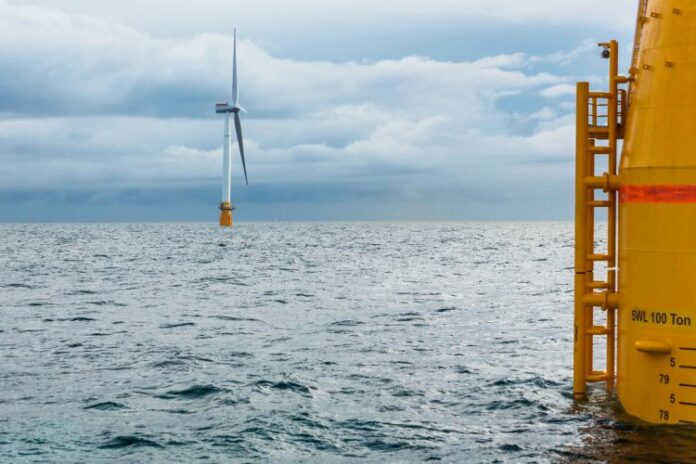With an average capacity factor of 57.1% in the twelve months to March 2021, the floating offshore wind farm set a new record in the UK.
During its first two years of operation, the wind farm achieved an average capacity factor of 54%. That compares to an offshore wind average in the U.K. of around 40%. The capacity factor is the ratio of actual energy output over a given period of time, to the maximum possible output. A higher capacity factor means lower intermittency and higher value.
With this top of the charts performance, the Equinor-operated wind farm has truly proven the potential for floating offshore wind, paving the way for the UK’s announcement of 1GW of floating offshore wind to be developed in the UK by 2030.
With Hywind Tampen onstream in 2022 Equinor will operate a third of floating offshore wind production worldwide.
Sonja Chirico Indrebø, plant manager for Hywind Scotland and Dudgeon, the bottom-fixed wind farm off the coast of North Norfolk, who also can show to strong results, says:
“The turbines on Hywind Scotland are covered in sensors, to extract as much data from the wind farm as possible. We’re monitoring everything from ballast, mooring, structural strains and the more regular wind turbine sensor data, looking at how best to optimise this innovative technology as we prepare to develop at scale. We’re sharing parts of this data across industry to help the advancement of the technology globally and more widely than just our own operations.”
As the first project of its kind, the Hywind Scotland wind farm has provided valuable data and results that will help drive the whole industry forward.
Sebastian Bringsværd, head of floating wind development at Equinor, says:
“It’s great to see the results Hywind Scotland and the floating technology keeps delivering. The potential for floating offshore wind is huge. With access to deeper waters and therefore higher and more consistent wind speeds, floating offshore is not only an efficient way to generate electricity from wind, this exciting technology can also provide jobs and value creation for the countries supportive of floating. In the UK alone, we are talking at least 17000 jobs and £33bn GVA by 2050. We believe Scotland has the potential to build a globally competitive offshore wind industry, including a real chance to enhance the development of floating offshore wind.”



